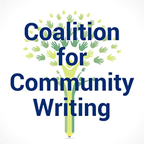Document Type
Article
Abstract
Being prepared with accurate, credible, and timely information during a disaster can help individuals make informed decisions about taking appropriate actions. Unfortunately, many people have difficulty understanding health and risk-related resources. This exploratory, mixed methods study assessed disaster information-seeking behaviors and comprehension of public health disaster preparedness resources by individuals at an adult literacy center. A convenience pilot sample of 20 adult learners (mean age: 53.1) was recruited. Health literacy was assessed using Newest Vital Sign (NVS) and modified Cloze (multiple choice) tests on biological terrorism and avian influenza information. In-person interviews were conducted to determine participants’ knowledge, perceptions, and information needs about disasters. Thematic analysis of interviews was conducted using NVivo7. Mean NVS was 3.11/6.00 implying limited health literacy. Mean Cloze scores revealed marginal disaster comprehension (avian flu: .46/1.00; biological terrorism: .48/1.00). Over half of participants with inadequate Cloze comprehension self-rated their understanding as “good.” Key themes emerging from interviews were: multiple perceptions about disasters, limited access to preparedness resources, need for visuals and plain language information, and importance of knowing where to go during a disaster. Study findings advocate for multimedia, plain language, and visual communication to influence adult learners’ literacy practices and self-efficacy in interpreting instructions and acting appropriately in preparing for and responding to disasters.
Recommended Citation
Friedman, Daniela B., et al. “Disaster Preparedness Information Needs of Individuals Attending an Adult Literacy Center : An Exploratory Study.” Community Literacy Journal, vol. 4, no. 2, 2010, pp. 55–73, doi:10.25148/clj.4.2.009442.

